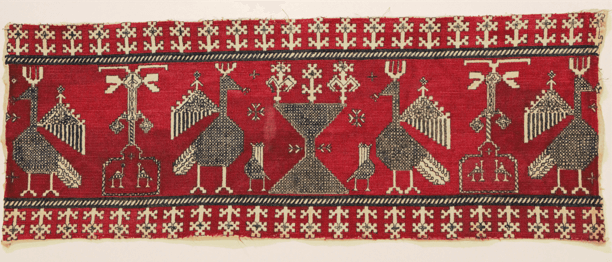Moroccan
Azemmour

The word for “paradise” in most European and Middle Eastern languages derives from the old Persian word for “garden” (more precisely, a word describing a closed, walled of area). For centuries, Persian gardens have been some of the most sophisticated mirrors of a perfectly harmonious universe. The cultural practice of creating gardens – manipulating nature to design landscapes – extended to South Asia (and beyond) during the Mughal era, leaving some of the fnest examples of gardens in the past centuries throughout Asia. However, Persian paradisiacal gardens have been represented most strikingly in carpets and textiles. Included here are a Central Asian ikat hanging, which often depicted abstracted forms of gardens; a kalamkari palampore, which could be viewed as one of the most faithful and idealized versions of Persian gardens, often imbibed with Islamic principles; a Sumba ikat constructed around a garden featuring the patola motif, which is one of the most trafcked visual motifs, circulating in the past millennia between Gujarat and South East Asia and shaping the visual world of textiles in the latter region; and lastly, an Azemmour embroidery with a garden imagined in Jewish mysticism.
Location Map

Designed & Developed by: Curves n' Colors | Visual identity by: Wkshps
